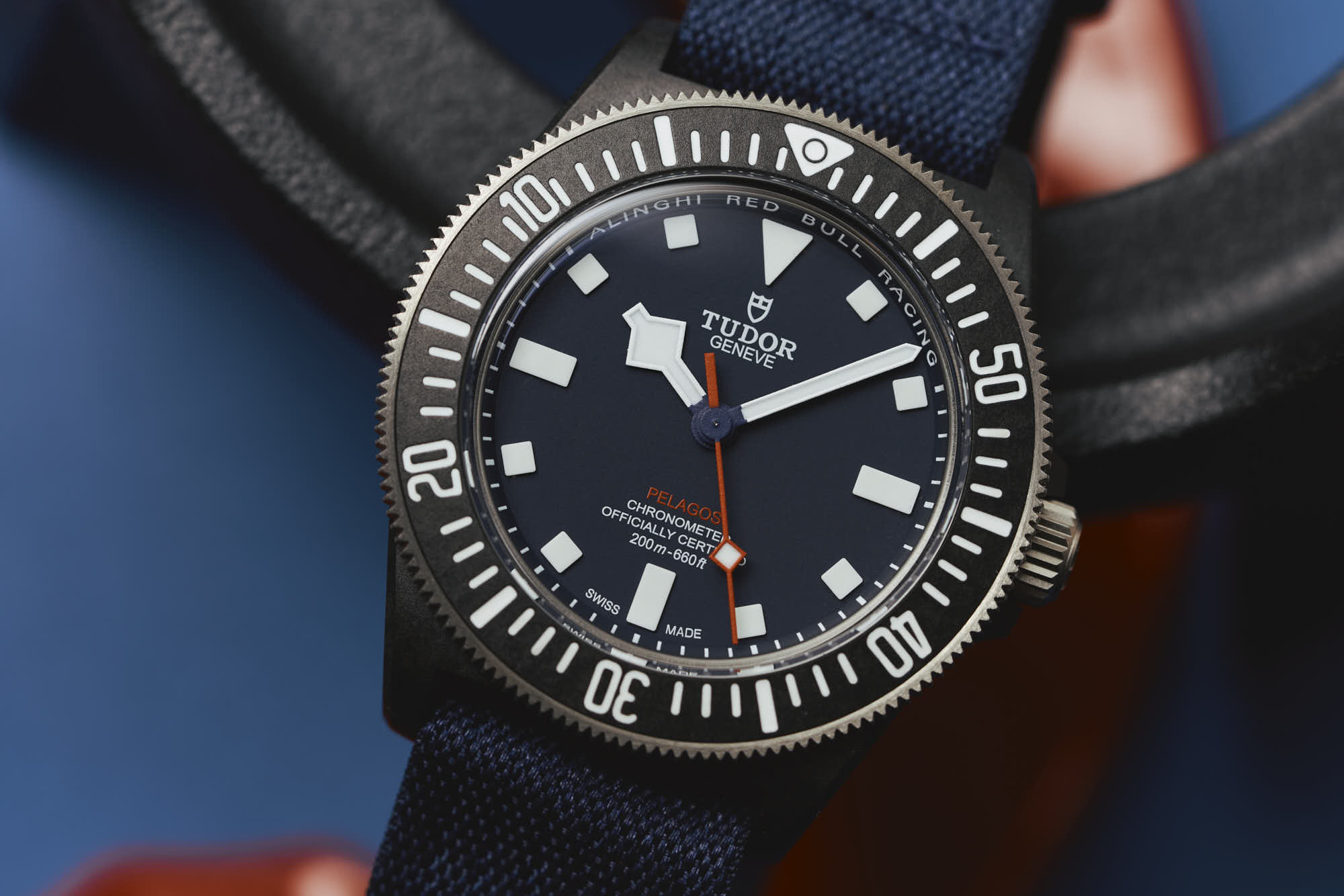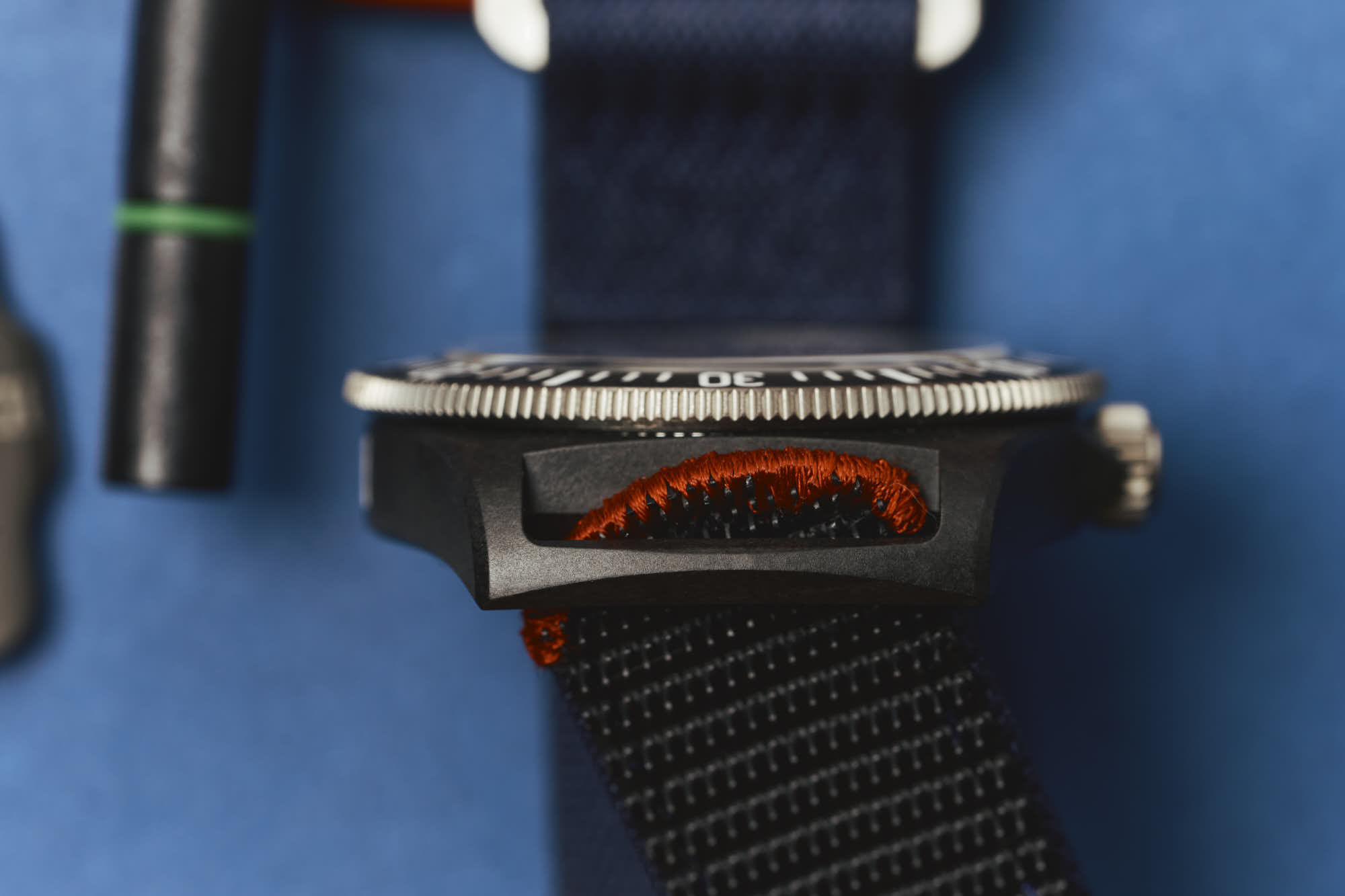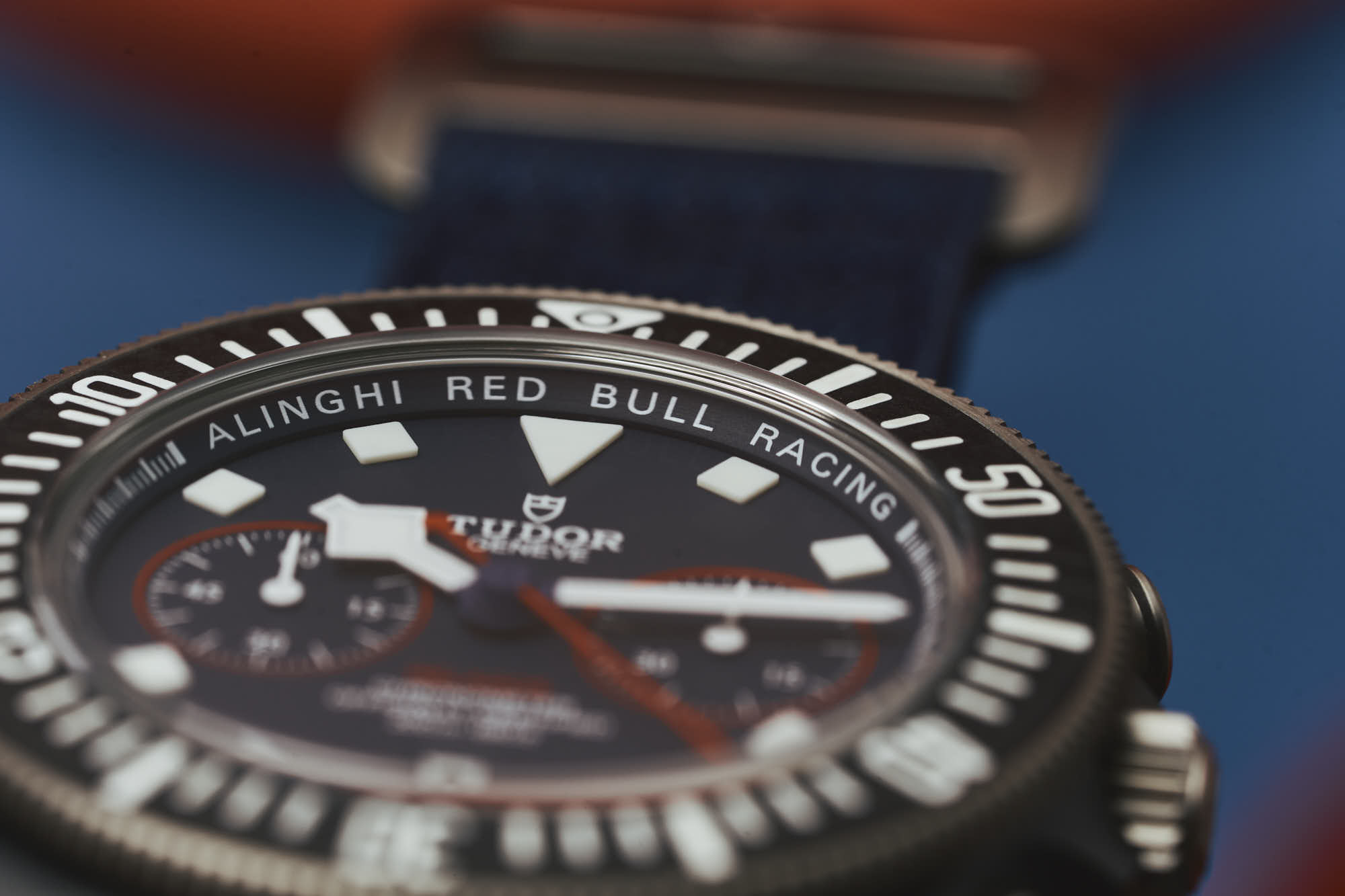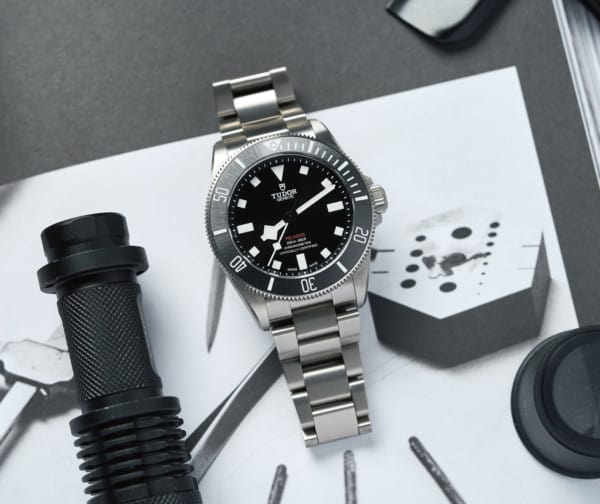When Tudor began teasing a new release over the summer, paired with a countdown clock planted in the wake of a passing boat, speculation quickly ended up in the usual places. A new steel BB58? A GMT Pelagos? Perhaps a regatta timer chronograph? As usual, these guesses ended up off the mark, with Tudor instead revealing a new pair of FXD watches made in conjunction with the Alinghi Red Bull Racing team. Along with them, a look at some wholly new features that will undoubtedly spur more predictions about what’s to come. After reviewing the FXD upon its launch in 2021, I’ve grown quite fond of the platform, as I often profess on the Worn & Wound podcast, but how well does it hold up in a different trim?
The FXD is a watch that works better in person and on the wrist than it does on paper. It’s large and relatively flat stature that touts a lug to lug measurement north of 50mm thanks to a fixed lug design meaning only passthrough straps can be used. But it’s more than all that on the wrist. It wears slim and the widest bit of the lug is under a strap, so while it’s not as easy going as something like the Pelagos 39, it’s perfectly easy to get along with overall. On top of that, it’s got one of the most low-key interesting personalities of any of the mainline dive watches out there. Additionally, after having completed my open water dive certification with the FXD on my wrist every step of the way, I can attest to its qualities under the surface, as well (more on all that coming soon).









 Featured Videos
Featured Videos















